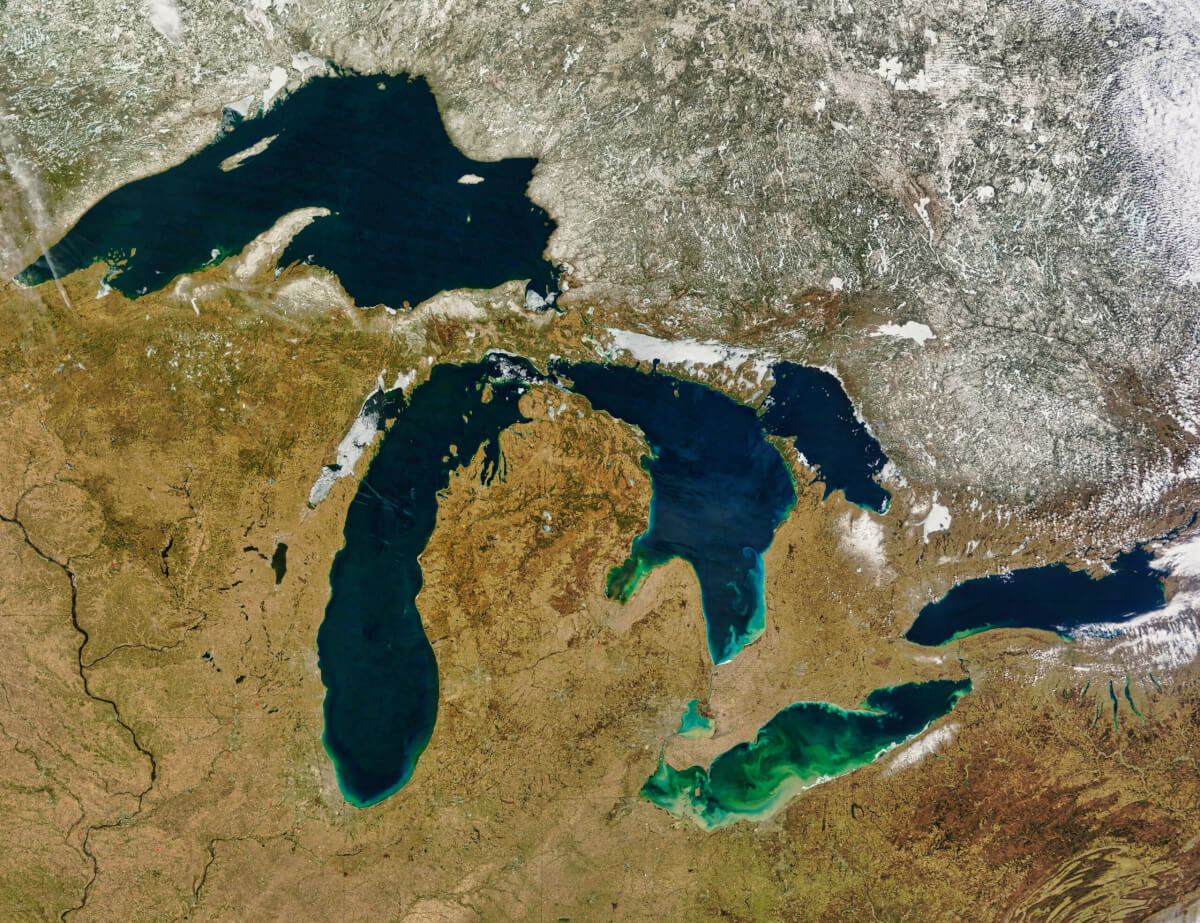WASHINGTON — A concerning new study is giving people even more reason to stay out of the rain. Researchers have found that perfluoroalkyl and polyfluoroalkyl substances, better known as “forever chemicals,” are making their way into vital sources of fresh water — from the sky.
In fact, these chemicals have been discovered in all five of the Great Lakes, according to researchers working with the American Chemical Society.
Perfluoroalkyl and polyfluoroalkyl substances get their dubious nickname due to their stability and the near impossibility of these chemicals degrading over time. These air pollutants have accumulated in the air, water, and soil. Exposure to forever chemicals is linked to a range of poor health problems, prompting the U.S. Environmental Protection Agency to label perfluoroalkyl and polyfluoroalkyl as hazardous substances.
Since they are so hard to break down, forever chemicals easily move across the water cycle, contaminating all sorts of water sources, including rainfall.
In the new study, published in Environmental Science & Technology, researchers found precipitation around the Great Lakes contained traces of forever chemicals. However, each lake eliminates the chemicals at different rates. The Great Lakes are a source of freshwater for the United States and Canada, which suggests contaminated drinking water may be prevalent in these areas. Additionally, the area around the Great Lakes is home to about 10 percent of the American population and 30 percent of Canada’s population.

Previous studies have shown evidence of forever chemicals present in the Great Lakes. However, this study sought to investigate where these compounds came from.
From 2021 to 2022, researchers collected 207 precipitation samples and 60 air samples from five sites around the Great Lakes: Chicago, Cleveland, Sturgeon Point, N.Y., Eagle Harbor, Michigan, and Sleeping Bear Dunes, Michigan. Another 87 water samples were taken across the five Great Lakes. The research team searched for evidence for 41 different types of forever chemicals.
Among the rainfall samples, the concentration of forever chemicals remained largely the same across all locations. The authors suggest this means compounds are present at similar levels regardless of population size. Air samples from Cleveland showed the highest average concentration of forever chemicals, while Sleeping Bear Dunes had the lowest concentrations. The findings suggest that for airborne forever chemicals, there is a strong link with population density.
Lake water samples revealed that Lake Ontario had the highest amount of forever chemicals, followed by Lake Michigan, Lake Erie, Lake Huron, and Lake Superior. The concentration of forever chemicals in lake water, however, did decrease compared to records from 2005 — with one exception. A chemical called perfluorobutanoic acid (PFBA) remained in high amounts, suggesting the need for further environmental regulations.
The team also found that forever chemicals most likely got into the lake from airborne traces left by rainfall. While lakes remove contaminants through sedimentation, some particles stick to the lakebed or flow out through connecting channels.
So, which lake has the worst chemical contamination? Across all five Great Lakes, the northernmost lakes (Superior, Michigan, and Huron) appear to be suffering from increasing amounts of forever chemical contamination. Lake Ontario, a body of water found further south, is eliminating the compounds more effectively. Lake Erie also has forever chemicals, but the concentration has not increased over time.
